Trees & the Law
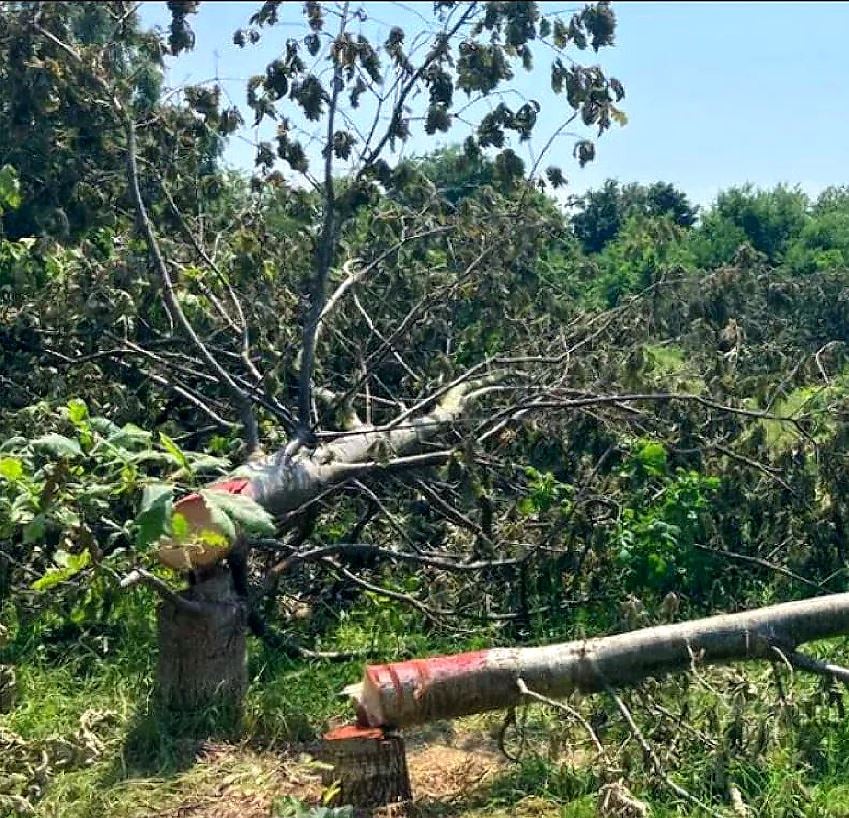
The importance of trees has been recognised in law for a very long time: Over 3000 years ago in Babylon, the Code of Hammurabi set out a wide range of laws, including Statute 80 which held that If any man, without the knowledge of the owner of a garden, fell a tree in a garden he shall pay half a mina in money (that's very roughly £100 in today's money but no doubt a substantial penalty for the average Babylonian!) It could be worse: under an old German law a person who peeled bark off a tree was to have his navel cut out, nailed to the peeled part of the tree and driven around until his intestines were would around the tree… It's unclear if this was ever enacted, but it sounds like an effective deterrent! In modern times the legislation associated with trees is perhaps less brutal, but it is extensive: The Law of Trees, Forest and Hedges by Dr Charles Mynors, Stephanie Hall and Elizabeth Nicholls runs to over 1000 pages!
The short items below are intended to answer some of the questions as to what tree owners and managers can and can't do
However, it is stressed that proper professional advice should be sought when questions of legality arise.
Buttons further down the page provide links to articles on Trees in Conservation Areas, Tree Preservation Orders and Felling Licences with a fourth link to items on High Hedges and Other tree-related Legislation.
Information about the general management of hedgerows can be found on the HEDGES page
See also TREES and PLANNING where the issues arising when trees are involved in planning applications are addressed.
Lastly, an introductory guide to Trees and the Law can be found in the Arboricultural Association leaflet HERE.
What is a Tree?
While the question "What is a tree?" seems simple enough, in terms of the law it can become quite complicated. At what stage does a seed become ‘a tree’? And does a tree cease to have legal considerations once it has died or been cut down? What about a sprouting stump? And, indeed, how does one differentiate between a shrub and a multi-stemmed tree?
The High Court has held that ‘a tree is anything which ordinarily one would call a tree’ which, while seemingly entirely reasonable is in the end unhelpful as what one person may regard as a tree might, in another’s eyes, clearly be a shrub.
Furthermore, a later authority decided that “There is no statutory definition of a tree. I conclude that with tree preservation orders there are no limitations in terms of size for what is to be treated as a tree”, while a case in 2015 declared that "A tree is to be so regarded at all stages of its life, subject to the exclusion of a mere seed. A seedling would therefore fall within the statutory term, certainly once it was capable of being identified as of a species which normally takes the form of a tree. This would accord with the purpose of a woodland tree preservation order in seeking to protect a woodland over a period of time as trees come and go, as they die and as they are regenerated." This is a special case, referring to the interpretation of Woodland Tree Preservation Orders, but it goes to show that the law can make simplest question complicated!
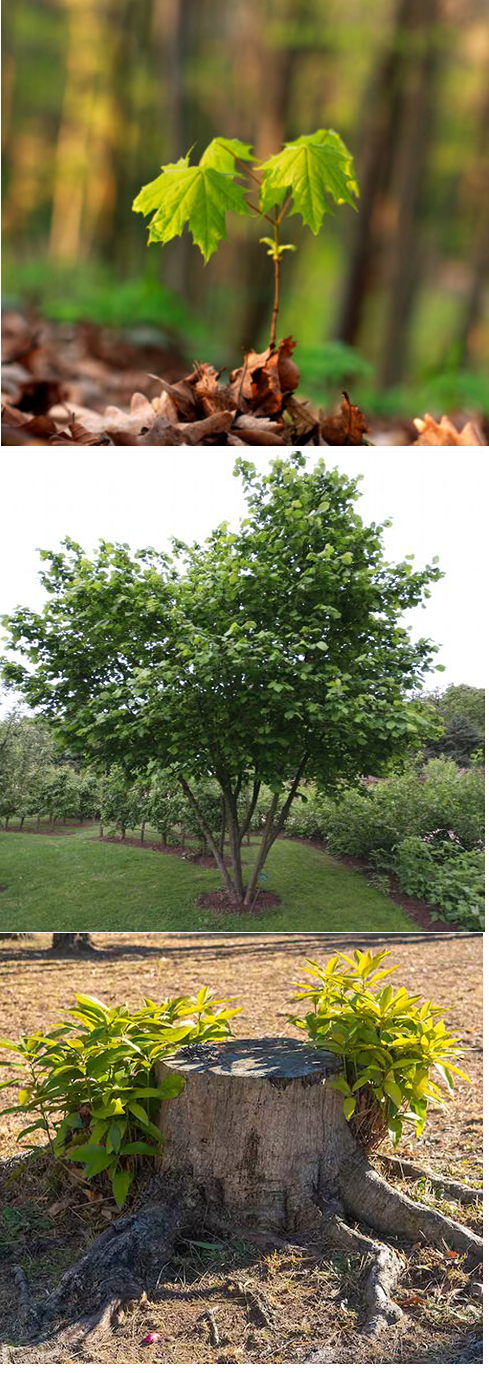
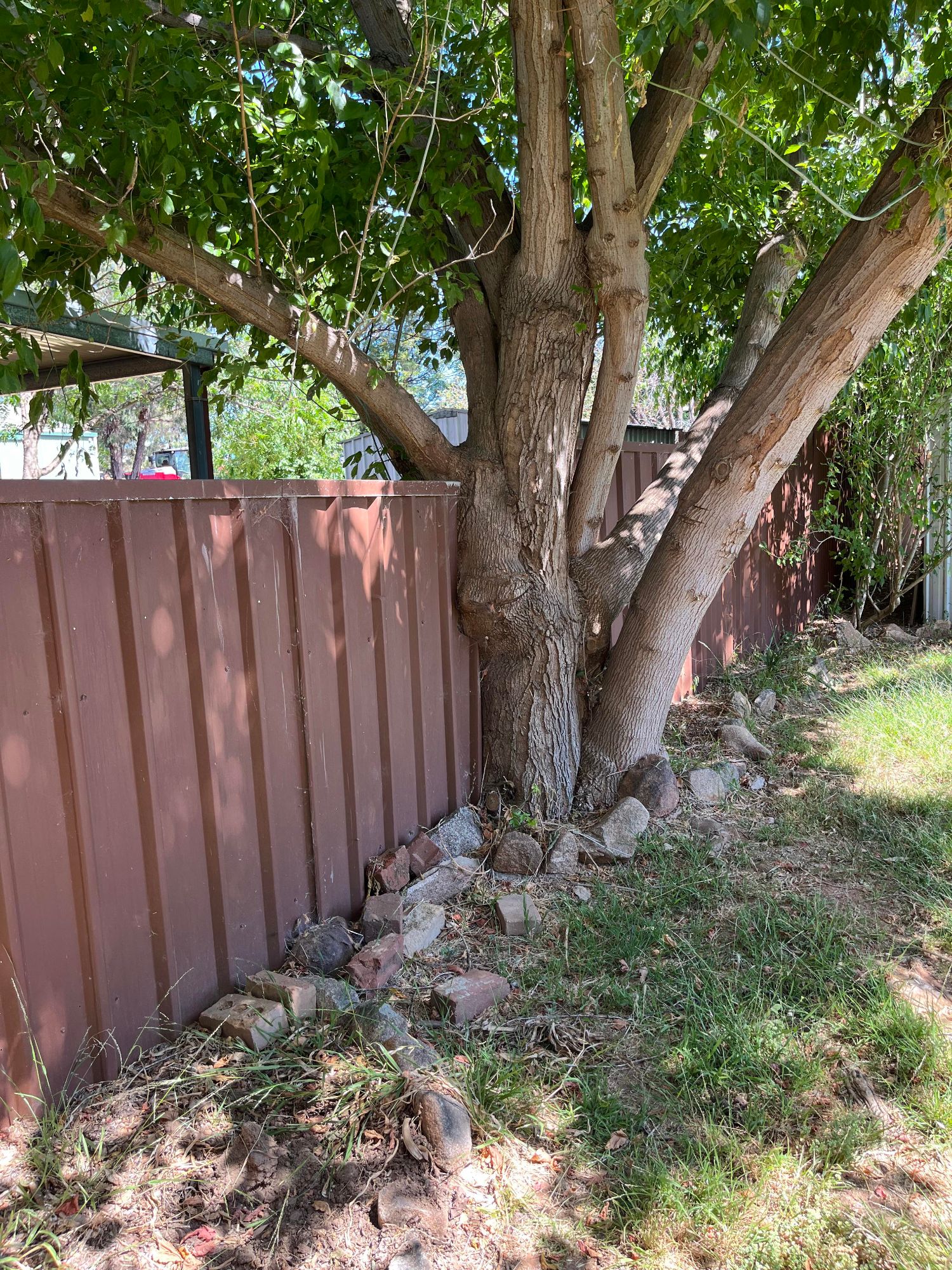
Whose Tree is it anyway?
Most simply, a tree belongs to the owner of the land on which the trunk sits. If it’s growing directly on the boundary If, as in the photo, the trunk actually straddles a boundary the tree is regarded as being jointly owned. In cases of shared ownership, consent should be obtained by one owner before work is carried out: someone felling a jointly owned tree without permission from the other owner would make them liable as it would amount to trespass.
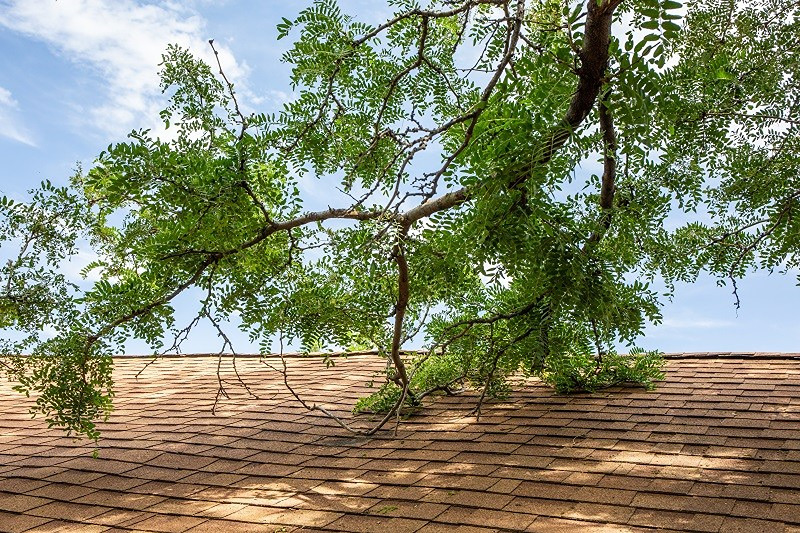
Overhanging trees & branches
While there is no duty for a tree owner to prevent it growing to overhang a neighbouring property, or to prevent roots spreading beyond the boundary, the neighbour has certain rights to deal with any nuisance so caused, that being defined as something that interferes with the 'use or enjoyment' of their land.
A property owner is entitled to cut branches that 'trespass' onto her or his land. They don’t have to ask permission to do so, but unless permission has been granted, they are only entitled to cut up to the line of boundary. Cutting back beyond the boundary line without permission would be a form of trespass.
It must be noted that those parts of a tree that spread over a boundary onto a neighbour's land remain the property of the tree-owner: any overhanging material that is cut off is still, technically, the tree-owner's property and should be offered back to her or him. The same applies to any fruit that falls onto the neighbour's land: it still belongs to the tree owner. Indeed the tree owner is entitled to enter the land to collect it. On the other hand, there is no requirement for the neighbour onto whose land it falls to keep such fruit safe
Leaves, by contrast, are regarded a 'free agents' once they are detached from the tree; they belong to and are the responsibility of the owner of the property on which they land. It would be unlawful for a landowner to deposit leaves they have collected back into the tree-owner's land.
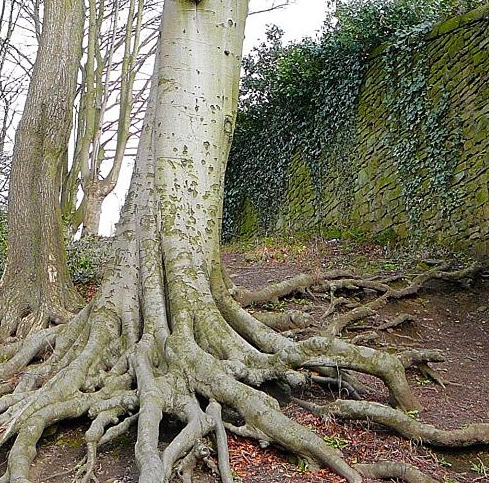
Roots encroaching over a boundary
The right to abate a nuisance also extends to roots: these may also be cut back by the neighbour to but not beyond the boundary. However, removing roots may adversely affect the health of a tree and could lead to instability; if the cut-back of roots causes the tree to die or to become unstable the tree owner may be able to make a claim against the neighbour.
In a situation where tree roots cross a boundary and cause damage in the neighbouring property (e.g. by blocking drains or contributing to structural damage) it may be possible for the property owner to make a claim for compensation from the tree owner and/or gain an injunction to have the offending roots removed. However, damages are only likely to be awarded if it can be shown that the tree owner was negligent, that the damage was reasonably foreseeable and that preventative action could have been taken.

